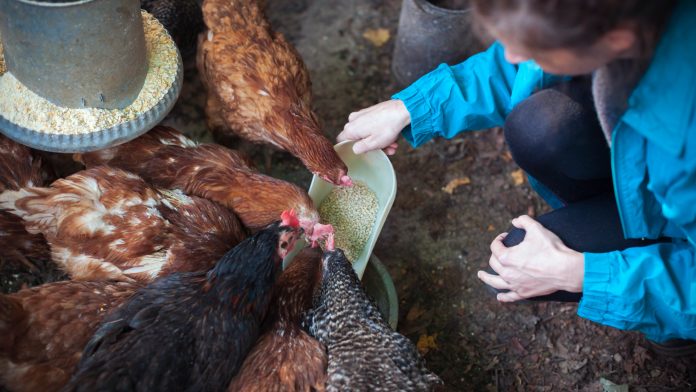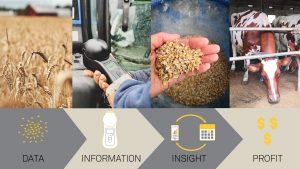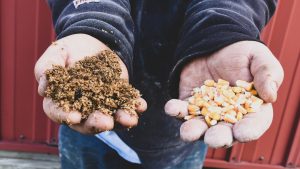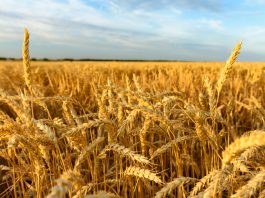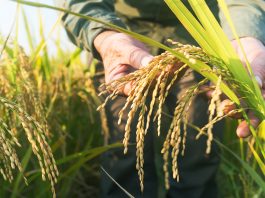With a device from GrainSense, it is possible to analyse the quality of raw materials used for animal feed anytime, anywhere.
In a rapidly changing agricultural environment, farmers need to make strategic decisions for their animal feed to keep their business profitable. Any individual farmer, whatever their production system may be, should be able to obtain the correct margins (which depends on both market prices and on production costs).
For a livestock farmer, regardless of which species is being raised, the feed costs represent the greatest portion of the overall cost of production. Feed costs can represent up to 70% of the overall production costs, especially for species such as swine or poultry. Farm livestock in the EU-28, consumes an estimated 478m tonnes of animal feed a year, of which 156m tons (33%) are produced by compound feed manufacturers. Indeed, many livestock and poultry producers choose to manufacture all or large portions of the feed for their animals on farms with the goal of better controlling feed costs. However, such practice requires knowledge, experience and above all, tools.
Like humans, animals need a diet that incorporates the four main nutrient groups: protein, carbohydrates, fibres, vitamins, and minerals. Indeed, the rations have to be balanced, digestible and provide all of the necessary nutrients required for an animals’ successful development. In the animal ration all nutrients are equally important, but many producers concern themselves the most with protein-rich feeds, as they tend to be the most expensive feeds to acquire, distribute and store.
In the EU animal feed sector, soybean meal is the most used and preferred protein source. The importance of soybean meal in the livestock sector can be explained by its high level of protein in relation to all other components, its consistent availability, price competitiveness and its higher level of the amino acid lysine, giving it a higher level of digestibility. Soybean meal is particularly widely-used as the main protein source in the pig and poultry sector where protein levels are particularly important. In the ruminant sector, protein content is less crucial and other meals such as rapeseed meal tend to be more readily substituted for soya. Recently however, many EU countries are trying to become less independent on soy imports and instead, increasingly promote other oilseed crops like rapeseed, sunflower or flax, and high protein crops such as peas, field beans, and lupine or alfalfa. Cereals only compose approximately 10% of livestock diets in protein. However, cereals represent the main source of carbohydrates in animal feed and cereals as soft wheat, corn, barley but also triticale, sorghum, oats, and rye are widely used in animal rations.
Want to learn more about GrainSense? Click here to view their partner profile page.
Precision feeding
In order to provide the right amount of nutrients to the animals, the rations are established according to different criteria (e.g. the species, age, genetic potential, farming methods. Nowadays, many producers make the choice to dig deeper and apply the principles of precision feeding. Precision feeding is part of the precision livestock farming approach and consists of using different feeding techniques in order to feed the correct amount of nutrients in a timely manner for each individual animal in order to enhance profitability, efficiency, and sustainability.
If feeding the proper feed is easier when using industrial compound feed, it is much harder to achieve for a producer who is mainly relying on his own crop production to sustain his herd. Indeed, many factors affect the feed quality – especially the quality of the raw material, feed formula, process technology used, and the feed storage conditions. The value of the feed distributed to the animal varies according to how it has been stored on the farm, including whether it deteriorates quickly or slowly.
All types of ingredients, as well as completed compound feeds, require special care during storage to prevent deterioration in both quality and loss. Stock control is also essential to fulfil the feed needs of the animals adequately, and to ensure that there is enough of each ingredient available for manufacturing when it is required. However, even with the best process technology or animal feed storage conditions, the feed output mainly depends on the quality of the raw materials. The nutritive and physical quality of raw materials vary greatly from year to year, depending on the growing conditions of the year and harvest conditions. These factors in particular can have a strong impact on the protein content of the raw material but also on its digestibility and energy value (amongst several other parameters).
Overcoming uncertainty in agriculture
Cereals and grains used to feed farmed animals are a good source of energy and their protein content is usually between 8 to 15%. When optimising the nutrition of farmed animals, it is important to know the nutritive value of every feed component. However, in most cases, the amino acid composition of cereals isn’t ideal for animals. As a result, a protein or an amino acid supplement is needed (even if the protein content of the grain is already high).
Special formulation should be followed exactly as any variation will alter the nutrient content of the final feed and may compromise animal performance. The first thing to check, when feeding farmed animals, is that the grain feed should be of good quality: good colour, no moulds or unwanted odours. In an optimal situation, the grains have already been divided into silos based on their protein content. Every time, when opening a new grain container, it is a good practice to measure the quality of the grains. With a device such as GrainSense, it is possible to analyse the quality of raw material used for animal feed at any time and anywhere. In animal production, there are many ways to benefit from the GrainSense device. The grain farmer can make a difference between different quality grains and sell the feed quality to the livestock farmer. The livestock farmer can optimise the feeding whether he bought the grains or grew them. Also, when purchasing grains, the animal farmer can check that the quality matches the price.
Tools like GrainSense can benefit different livestock producers depending on their production system. For example, an egg producer will rapidly realise that if the protein content of the wheat he produced is 15% instead of the 12% usual protein content, it will affect the size of the eggs and the feed will need to be adjusted accordingly. Having effective tools to help decision making is also essential in modern farming as one of GrainSense’s customers confirms: “In agriculture, there is always a feeling of uncertainty. With GrainSense, I can have more peace of mind because I always know the protein content of the grains that I’m giving to my broilers”.
The livestock industry is one of the largest and most influential industries on the planet. With millions of farms and billions of animals worldwide, the livestock sector’s ultimate goal is to optimise yields to ensure economic viability and to supply sufficient volumes to feed the global population. Considering this, it becomes clear that livestock nutrition is an important, if not the most important, aspect of a livestock business operation. Livestock farming is a very demanding business activity, requiring excellent technical skills and knowledge and most of all, adequate tools.
Julia Auzeral
Business Developer
GrainSense
www.linkedin.com/company/grainsense
www.grainsense.com
Please note, this article will also appear in the second edition of our new quarterly publication.

